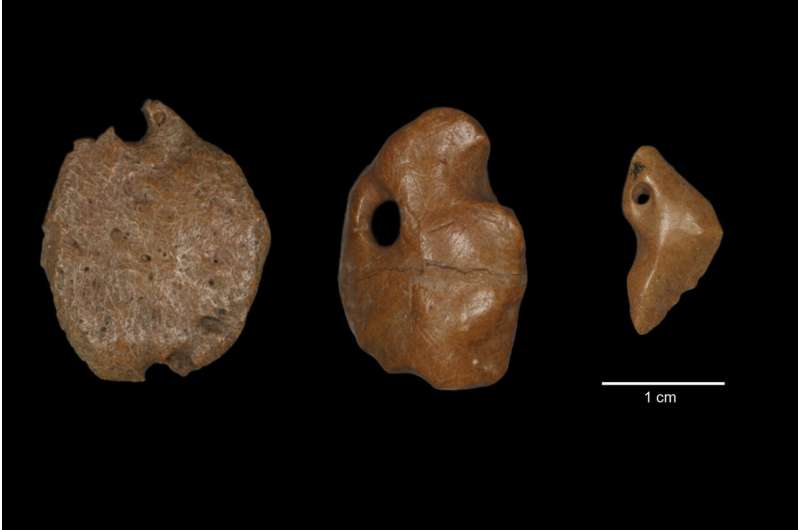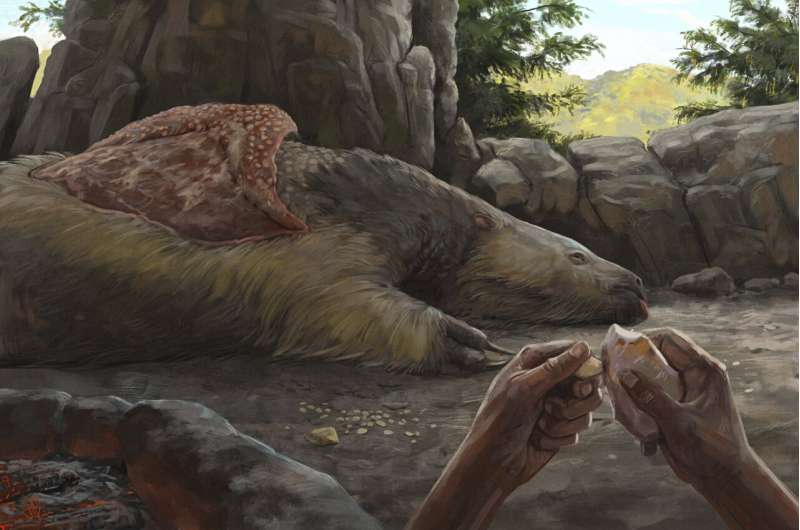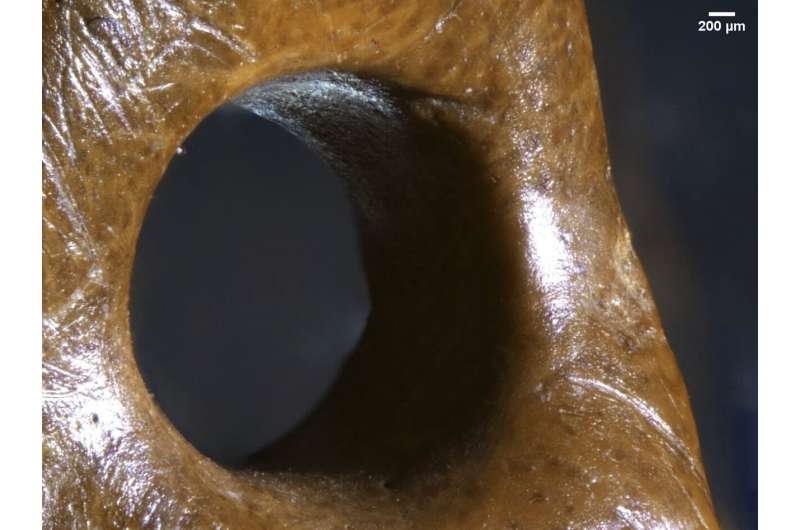This article has been reviewed according to Science X's editorial process and policies. Editors have highlighted the following attributes while ensuring the content's credibility:
fact-checked
peer-reviewed publication
reputable news agency
proofread
Pendants made from giant sloths suggest earlier arrival of people in the Americas

New research suggests humans lived in South America at the same time as now extinct giant sloths, bolstering evidence that people arrived in the Americas earlier than once thought.
Scientists analyzed triangular and teardrop-shaped pendants made of bony material from the sloths. They concluded that the carved and polished shapes and drilled holes were the work of deliberate craftsmanship.
Dating of the ornaments and sediment at the Brazil site where they were found point to an age of 25,000 to 27,000 years ago, the researchers reported. That's several thousand years before some earlier theories had suggested the first people arrived in the Americas, after migrating out from Africa and then Eurasia.
"We now have good evidence—together with other sites from South and North America—that we have to rethink our ideas about the migration of humans to the Americas," said Mirian Liza Alves Forancelli Pacheco, a study co-author and archaeologist at the Federal University of Sao Carlos in Brazil.
In the past decade, other research has challenged the conventional wisdom that people didn't reach the Americas until a few thousand years before rising sea levels covered the Bering land bridge between Russia and Alaska, perhaps around 15,000 years ago.
The ornaments were discovered about 30 years ago at a rock shelter called Santa Elina in central Brazil. The new study is the first to analyze them extensively and rule out the possibility that humans had found and carved them thousands of years after the animals perished.

The team of researchers from Brazil, France and the United States said their analysis shows this handiwork was done within days to a few years after the animals had died, and before the materials had fossilized. The researchers also ruled out natural abrasion and other things that might explain the shapes and holes. They reported their findings Wednesday in Britain's Proceedings of the Royal Society B journal.
"We think they were personal objects, possibly for personal adornment," said Thais Rabito Pansani, a co-author and paleontologist at the Federal University of Sao Carlos in Brazil.
Once among the largest creatures in South America, giant ground sloths were 10 to 13 feet (3 to 4 meters) in length and usually walked on all four legs, using their sharp claws to dig burrows. They weighed more than a thousand pounds (450 kg) and their skin included bony structures under their fur—somewhat similar to the bony plates of modern armadillos.
Two years ago, another team of researchers reported that fossilized human footprints found near White Sands, New Mexico, dated back to 21,000 to 23,000 years ago—though some researchers dispute these dates. Other evidence from Mexico suggests human presence around 26,000 years ago, and findings from Uruguay may suggest human occupation as much as 30,000 years ago.

Jennifer Raff, an anthropological geneticist at the University of Kansas, who was not involved in the study, said the new paper was "an important addition" to the conversation, but like any findings on the topic, it may also draw pushback.
Still, the evidence from multiple sites forces scientists to rethink old assumptions that people arrived only in one great wave of migration over the Bering land bridge, said Briana Pobiner, a co-author and paleoanthropologist at the Smithsonian Institution's National Museum of Natural History in Washington.
Some may have died out, "but it's very likely that multiple waves of people came to Americas," she said.
More information: Thais R. Pansani et al, Evidence of artefacts made of giant sloth bones in central Brazil around the last glacial maximum, Proceedings of the Royal Society B: Biological Sciences (2023). DOI: 10.1098/rspb.2023.0316
Journal information: Proceedings of the Royal Society B
© 2023 The Associated Press. All rights reserved. This material may not be published, broadcast, rewritten or redistributed without permission.





















